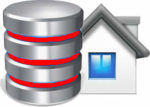The world’s No.1 hands-on Oracle SQL workbook fully updated for Oracle 10g
by Alice Rischert
This book will take you through all apsects of the Oracle SQL language with useful tests of your sql knowledge at the end of every chapter, which is something a lot of books do not contain. Don’t worry you can find the answers if you get stuck at the back of the book.
In order to get the most out of this book you will need an Oracle 10g database and access to the sql language either via sql plus, isql plus or another sql editor.
The contents of the book are based upon a student schema which was designed to manage a computer education program, including information on instructors, courses, students and their enrollments and grades etc.
This book is not a reference book but a book that you really need to work your way through and complete the exercises in order to get the most out of the book. Also this book does not cover all aspects of the SQL language, (like a reference book would) but just the major most commonly used areas.
You will learn everything from the basic select statements, to using the built-in oracle functions, understanding Oracles data formats, converting datatypes, using aggregate functions, group by, equijoins, subqueries, inline views, outer joins and self joins – all of this is just in the first half of the book.
The second half of Oracle SQL by example contains such topics as the transactional area of Oracle, creating, altering and dropping tables, views, indexes and sequences. The Oracle Data Dictionary is also included together with detail on users, privileges, roles and synonyms.
There is also information on the newer Oracle 10g SQL such as regular expressions, advanced sql concepts and analytical functions –such as using RANK(), LEAD(). There is also a chapter on ROLLUP and CUBE. The final chapter includes a great chapter on the Oracle Optimiser and how to write effective sql statements.
The appendices include the answers to the questions at the end of every chapter, plus an SQL formatting guide, SQL Plus Command Reference, extra resources and a thorough grounding on the student schema.
Overall this is a great book especailly if some parts of the Oracle SQL language confuse you, or you want to be introduced to the newer features of Oracle. Anyone could pick up this book and start learning Oracle SQL. This is not a reference book, but it is not trying to be, so it is worth working through this book chapter by chapter.
